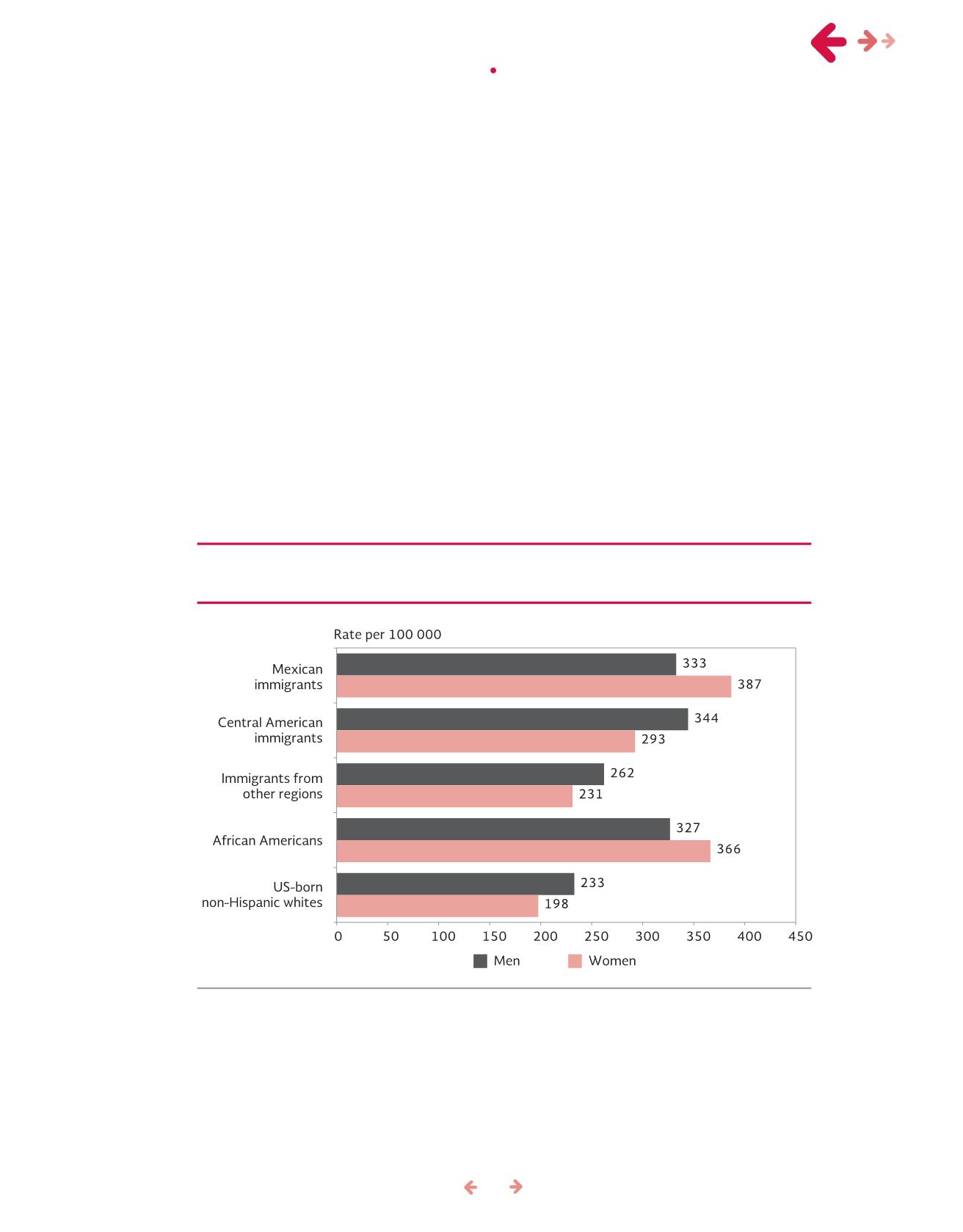
69
During the2012 to2013period,Mexicans and
African Americans had the highest rates of diabetes
diagnosis, with 362 and 351 per 1 000 respectively,
far higher than that of non-Hispanic whites (213 per
1 000) (Figure 57). This is a priority issue since the
limitedaccess tohealth services experiencedbyMexi-
can immigrants reduces their access to timelydiagno-
sis and adequate treatment, which is exacerbated by
economic, social and languagebarriers.
Moreover, elderly Mexican immigrant and Afri-
canAmericanwomendisplayahigher prevalence than
men,whereas inothergroups, thesituation is reversed.
Importantly,MexicansandCentralAmericanshave the
greatestgender gapsoutof thefivepopulationgroups
(54and51per 1000, respectively) (Figure58).
Womenexperiencemoredifficulty thanmen
inperformingdailyactivities inoldage
In 2012-2013, across all population groups, women
over65hadahigher rateof functional limitations than
menover 65.Mexican immigrantwomenhave the se-
condhighest rateof functional limitations (37%)after
other immigrants (38%), and the rate forMexican im-
migrant men (28%) is lower than African Americans
andother immigrants, but higher than thatofUS-born
non-Hispanic whites (25%). Mexicans have the hig-
hest gender gap of all the five population groups (8.7
percentagepoints) (Figure59).
Source: EstimatesbyCONAPO, basedon
National Health InterviewSurvey
(NHIS), 2012-2013.
Figure58. Populationover age65 living in theUnitedStates havingbeendiagnosed
withdiabetes, bygender, basedon regionof originandethnicityor race, 2012-2013
chapter i i i •
risk factors and health conditions


